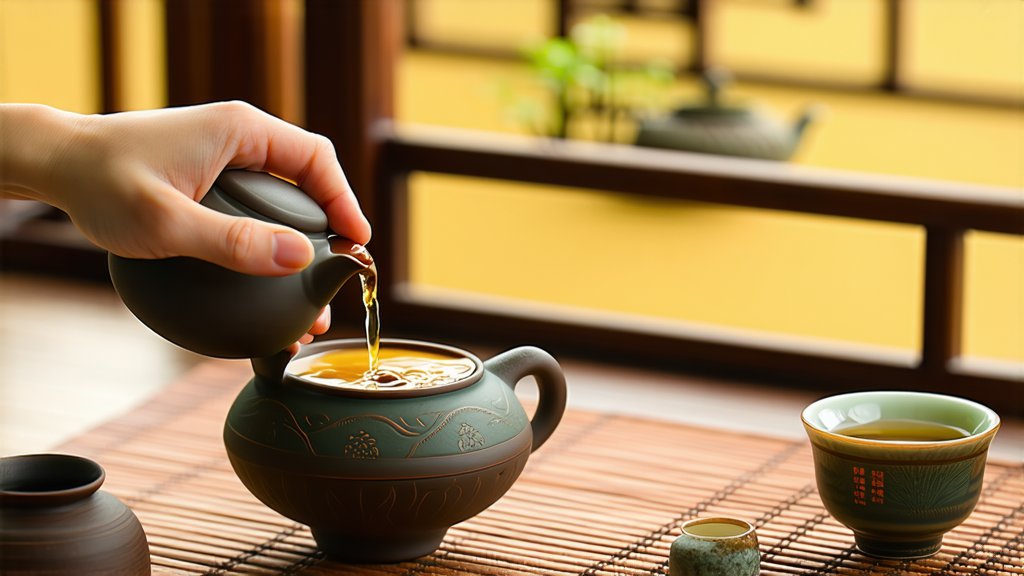
China, the cradle of tea culture, boasts an array of exquisite tea varieties that have captivated palates for centuries. Among these, Junshan Yinzhen, a distinguished member of the yellow tea family, stands out as a testament to the artistry and innovation inherent in Chinese tea making. This article delves into the rich history, diverse types, intricate production process, and refined tasting techniques associated with Junshan Yinzhen, offering international readers a glimpse into the golden elixir that has charmed connoisseurs across generations.
Historical Background
The origins of Junshan Yinzhen can be traced back to the Tang Dynasty (618-907 AD), during which time it was considered one of the top-quality tribute teas offered to Chinese emperors. Its name, "Junshan Yinzhen," translates to "Silver Needle from Junshan," referencing its place of origin in Junshan County, Hunan Province, and the delicate, needle-like appearance of its leaves. Over centuries, this tea has evolved, yet retained its esteemed position within China's tea hierarchy, symbolizing not just a beverage but a cultural heritage deeply intertwined with Chinese philosophy, art, and medicine.
Varieties of Junshan Yinzhen
Junshan Yinzhen comes in several grades, primarily differentiated by the length of the buds and the presence or absence of leaves. The highest quality, known as "Bud Only" or "Yan Hao," consists solely of the tenderest shoot tips without any leaves attached. Slightly lower grades may include a combination of buds and young leaves, while the more common varieties incorporate a mix of leaves, stems, and buds. Each grade offers a unique flavor profile, with the Bud Only being the most prized for its exceptional sweetness and smoothness.
The Art of Making Junshan Yinzhen
The production of Junshan Yinzhen is a meticulous process that requires precision and patience. It begins with the careful selection of young tea shoots, typically harvested in early spring when the first flush of growth emerges. These shoots are then skillfully hand-picked, ensuring only the finest buds are chosen.
Next comes the critical stage known as 'fixation,' where the freshly picked leaves undergo a gentle steaming or pan-firing to halt oxidation while preserving their natural green color. Unlike green tea, which is quickly fixed at high temperatures, yellow tea undergoes a slower, controlled heating process that allows for partial oxidation, giving rise to its distinctive amber hue and subtle flavors.
Following fixation, the leaves are wrapped in paper or cloth and left to undergo a unique 'sealing' or 'yellowing' process. During this phase, the tea is kept in a humid environment for several days to weeks, allowing enzyme activities to continue slowly, further transforming the leaf's color and flavor profile. This step is crucial in developing the characteristic golden color and mellow taste of Junshan Yinzhen.
Finally, the tea is dried through a series of gentle heat applications, after which it is sorted and graded based on size and quality. The finished product is a testament to the tea master's expertise and the harmony between nature and human craftsmanship.
Tasting Junshan Yinzhen: A Sensory Journey
To fully appreciate Junshan Yinzhen, one must engage in a mindful tasting ritual that honors its complexity and depth. Begin by selecting a clear glass or porcelain cup to observe the tea's elegant dance as it infuses. Use water heated to around 80-85°C (176-185°F) to avoid scalding the delicate leaves.
Add approximately 3 grams of tea per 150 ml of water, allowing ample room for expansion. As the leaves unfurl gracefully, they release a light, floral aroma with hints of honey and fruit. The initial sip reveals a velvety texture and a sweet, nutty flavor, followed by a lingering aftertaste that evokes memories of fresh mountain air and wildflowers.
To savor the full spectrum of flavors, Junshan Yinzhen offers, multiple infusions are recommended. Each subsequent brew will unveil new layers of taste, from creamy and buttery to subtly astringent, showcasing the tea's versatility and longevity.
Conclusion
Junshan Yinzhen represents more than just a type of tea; it embodies the essence of Chinese tea culture—a blend of tradition, innovation, and a deep respect for nature's gifts. From its storied past as an imperial delicacy to its present-day status as a sought-after specialty, this yellow tea continues to enchant and educate tea enthusiasts worldwide. By understanding its historical roots, engaging in its production process, and practicing the art of its tasting, one can truly appreciate why Junshan Yinzhen remains a cherished treasure among the vast landscape of Chinese teas.